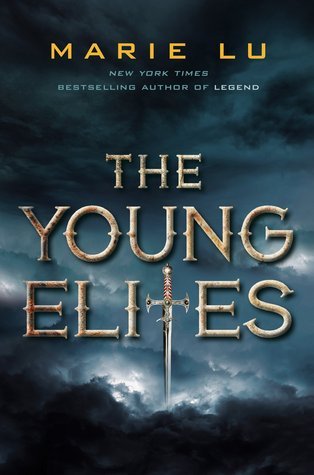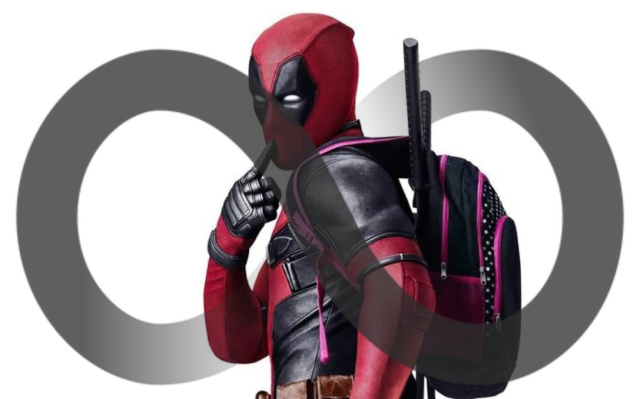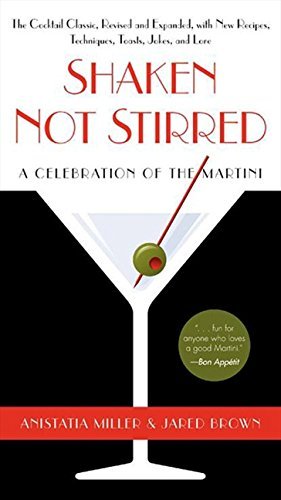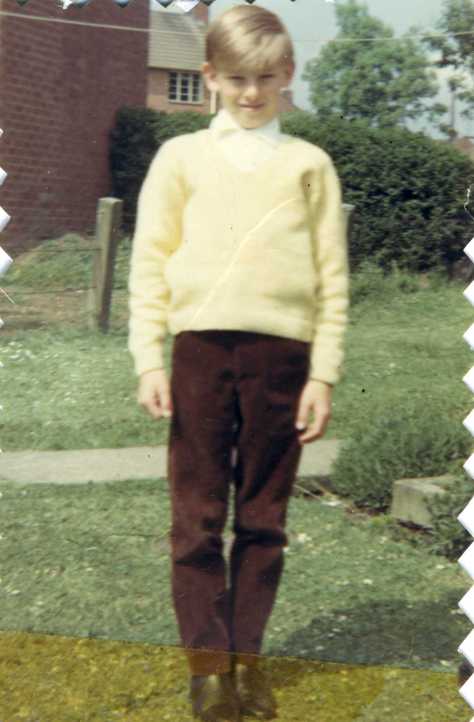Yup, I’m going to bat for this game!
The loot box controversy has understandably dominated the narrative surrounding the release of Battlefront II, feeding into the wider issue in the gaming industry as a whole which has been building up for some time now. The unfortunate consequence is that discussion about the story and campaign has been… largely sidelined, which is a real shame because I feel there is a lot to love here.
I’m always somewhat intimidated when it comes to writing about Star Wars because I often wonder what exactly I have to add to the conversation that hasn’t already been said by countless others. However, this is a unique occasion where I do have a lot to say about this story – the epic tragedy of Inferno Squad – that has gone unsaid.
Having read Christie Golden’s Inferno Squad novel, providing a more complete contextual picture of these characters, I wanted to write a narrative appraisal encompassing both works (as the novel really is an essential component of the game).
So this will be the first of three articles exploring and analysing the campaign of Battlefront II, which will go as follows:
Part 1 – Context (Inferno Squad and Operation: Cinder)
Part 2 – The Tragedy of Inferno Squad (main campaign)
Part 3 – Resurrection (story DLC)
Oh, and deflector shields for spoilers are down!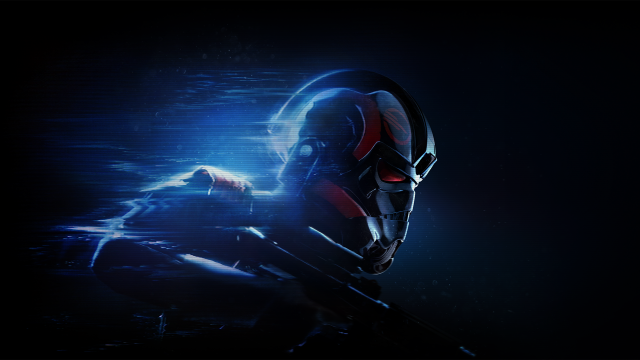 The purpose of this article is to establish some key context from the novel and a couple of other pieces of peripheral fiction that feed directly into the game. I’ll be referring to these details in the two articles to follow, so this is to sort of set the table for the main course.
The purpose of this article is to establish some key context from the novel and a couple of other pieces of peripheral fiction that feed directly into the game. I’ll be referring to these details in the two articles to follow, so this is to sort of set the table for the main course.
As with all Star Wars stories, it’s ‘porous’. It has gaps. It has a wealth of connections to other fiction; it throws us into its plot, trusting us to know that there is more going on than just what we’re seeing. That much should be obvious, given that it takes place over a much longer period of time than we’re perhaps accustomed to.
This approach to the storytelling comes with all the positives and negatives of telling an intertextual story.
On one hand, it really brings a sense of scale to the story that you’re involved in, kids playing this game are going to come up with their own ways of filling the gaps themselves to make the story their own; on the other, the most obvious flaw is that there are character and story beats and concepts that aren’t given as much time as they need to be fleshed out, as the plot moves along at its brisk pace (which is sometimes a necessary evil of the genre, given that it’s a shooter and not an RPG).
As for the peripheral fiction itself – particularly the Inferno Squad novel – I feel it verges on necessary for a full understanding and appreciation of Battlefront II. That won’t be true for all cases (I’ve spoken to several friends who haven’t read the novel and loved this campaign), but the context is so rich that I think one should be aware of it when going into this game.
For the future, I would urge EA and DICE to consider putting in some sort of lore codex that details some of these things. There are collectibles you can find in the campaign that don’t actually unlock anything one would associate with the term ‘collectible’, they give you a meagre number of credits or crafting parts. Instead, I think it would be better if the game built on the much-maligned ‘diorama mode’ from the previous Battlefront. Collectibles you find in the campaign could unlock relevant bits of lore on things like characters, vehicles, planets, and so on – something to consider for the future, I hope…
So, let’s begin with Inferno Squad itself. Inferno Squad is an Imperial special forces unit, formed by Admiral Garrick Versio (Iden’s father) following the events of Rogue One and A New Hope, where the Death Star plans were stolen – leading to the station’s eventual destruction.
Inferno Squad is an Imperial special forces unit, formed by Admiral Garrick Versio (Iden’s father) following the events of Rogue One and A New Hope, where the Death Star plans were stolen – leading to the station’s eventual destruction.
This is where the Inferno Squad novel begins, with Iden witnessing the destruction of the first Death Star as one of the TIE pilots shooting down Rebel X-Wings. We see that moment from her point of view, which very unexpectedly breathed new life into that iconic trench run sequence, as Iden is trying to figure out what exactly is going on.
Why is the Empire mounting such a hard defence against a few Rebel X-Wings?
Why has Darth Vader entered the fray?
Yavin IV is in sight, this is surely just the Rebellion’s death knell, sending what little they have left as a final defiant act, right?
And then the Death Star blows up.
She thought of the dreadful silence on the comm. And now that she knew, now that she had wrapped her brain around something that was not supposed to happen, that no one had ever imagined could happen, she recognised some of the pieces that she was trying so desperately to evade.
They were of Imperial construction.
Imperial.
Pieces of the great battle station that–
A single short, harsh, disbelieving gasp racked her slender frame. Then Iden Versio clenched her teeth against a second outburst. Pressed her lips together to seal it inside her.
She was a Versio, and Versios did not panic. [Battlefront II: Inferno Squad, page 11-12]
Garrick Versio creates Inferno under the pretext of them being a team that follows and carries out orders without question. Their purpose was to “recover everything and anything, anyone and everyone, who might pose the slightest threat to the Empire”.
As the events of Battlefront II pick up with the destruction of the second Death Star, Iden brings this up – saying that their squad was formed to make sure nothing like this could ever happen again.
“Your mission will be to recover information, artefacts, or individuals that could prove harmful to the Empire if they fall into the wrong hands – or if, perchance, such information has already fallen into the wrong hands. You’ll be cleaning things up, as it were. We’ve just borne witness to the level of damage that can be inflicted upon our Empire when such pivotal information is used against us. We cannot, must not, shall not allow this to happen ever again.” [Inferno Squad, p. 34]
The first major assignment that Inferno Squad go on together was a deep-cover mission to infiltrate and take down the last remnants of Saw Gerrera’s partisans – a group called the ‘Dreamers’.
In order to accomplish this, each member of Inferno does something that ends up being relevant to their character arcs in the game. There’s a lot of set-up here, owing to how closely Christie Golden worked with the cast and writers of Battlefront II – Janina Gavankar, Iden Versio herself, was brought up by Mitch Dyer (writer) as being deeply involved in the construction of her character. That level of dedication, the confluence of intentions and talent across the board, always elevates a work in my eyes.
Iden is positioned as a traitor to the Empire, with the intention of having her become the face and voice of the Dreamers – a former Imperial loyalist turned to their cause, mentored by an enigmatic figure named… The Mentor.
Gideon Hask and Del Meeko pose as brothers, which is hugely important in interpreting and understanding their relationship in the game. They spent all of their time together, knew each others’ mannerisms and quirks as brothers do – it’s why Hask takes Del’s actions so personally at the end of Battlefront II.
It is noted that close personal relationships are not common in the Empire, so what forms between these characters in this close-knit squad is actually quite unique. Over the course of the novel, a number of the Inferno Squad’s members find themselves relating to the Dreamers more closely than they’d expected.
Over the course of the novel, a number of the Inferno Squad’s members find themselves relating to the Dreamers more closely than they’d expected.
Del befriends an ageing Chadra-Fan (an alien that looks like a mixture of human and bat) named Piikow and he spends a considerable amount of time trying to think of a way to ensure Piikow survives their true mission – that the Empire could even help him, that access to their medical technology could prolong his life and he could put his exceptional engineering talents to work.
Del is the heart and soul of Inferno Squad, his innate likeability is something that seems notably ill-fitting for the Empire.
He smothered his own grin. Wisecracks weren’t regulation, but Del let his team indulge in them. They knew well enough how to be serious – deadly serious – when the time came.
Sobering slightly, he said, “I’ll miss you all, too.” One wasn’t supposed to get overly attached to one’s team, but Del did. He got attached to lots of things, and one of the most challenging lessons he’d had to learn was how to curb his natural friendliness. [Inferno Squad, p. 28]
Iden discovers the true identity of the Mentor – which I won’t spoil, but I will say that he is an established character we’ve seen a fair bit of in the past – and, in their final meeting at the novel’s climax, shoots him. She seemingly kills him.
Seemingly.
Del says to her at the end that he noticed Iden’s blaster was set to stun, and she confirms his statement that she didn’t kill him. She lied. To her father, and to the Empire…
But not to Del.
“You can’t quit hoping, Iden. Cling to it like a lifeline, because it is. Hope that something you do, or say, will make a difference. Look at the Death Star. One man hoped, for years, clutching an awesome, tremendous secret close in his heart, that somehow he’d be able to reach someone and let them know that abomination had a weakness. The rebels who stole the plans at Scarif died, but they hoped that they had transmitted the signal in time. Leia hoped the plans would reach the rebels. Hope, Iden. It’s at the root of everything we believe. Without it, we’re nothing.” [Inferno Squad, page 292-3]
Even Garrick Versio has a moment at the end where we see he is capable of compassion towards Iden. Iden’s mother, Zeehay Versio, was afflicted with a terminal illness that claimed her life by the end of the novel – the last contact Iden received from her was a message after her fake treason, in order to catch the eye of the Dreamers.
Part of Iden’s motivation as a character is to reveal to her mother that she never betrayed the Empire, as Zeehay is none-the-wiser to Garrick’s schemes (she’s a propaganda artist, not somebody with any significant security clearance), and the idea that her only child is a traitor to the Empire is something that will undoubtedly accelerate her condition. Iden’s great fear is that Zeehay will die thinking her daughter betrayed her. When Iden returns, Garrick reveals that she has passed away… but not before he told her the truth.
In the back of my mind, when I first read the novel, I did wonder whether Garrick lied to Iden here. Whether he was just telling her what she wanted to hear. The added context of the game and how it concludes their relationship leads me to believe – to hope – that he didn’t, as there is a sliver of decency in him. The only person who doesn’t really undergo any change, who doesn’t have any moment of subversion, is Hask.
The only person who doesn’t really undergo any change, who doesn’t have any moment of subversion, is Hask.
He is the one who, in the end, murders the Dreamers – including Piikow, who Del wanted to save. Worse, when Iden is on the way back from her final confrontation with the Mentor, he says he has “a little surprise” for her before revealing the pile of corpses – leaving Iden furious with him, citing his actions as egregious and unnecessary.
Del was leaning against the ramp. His head rested on one arm, cradling his face. A blaster dangled limply from the fingers of his other hand. His body was taut, as if he were in pain.
Hask had a blaster, too, but he was grinning, waving to Iden as she pulled up.
The Dreamers lay sprawled on the ground.
Iden stared at the crumpled forms. She couldn’t breathe.
[…] “See? I told you it was a surprise,” Hask said. “Shockingly easy. We should have done this a long time–”
Iden was on him, grabbing his tunic and shoving him, hard, against the ship’s bulkhead. He made no move to stop her and simply stared, as if she’d lost her mind.
Breath came back to her in a rush. “Why?” she shrieked. “Why?”
“Easy, Captain,” soothed Hask, “you’re getting carried away here. All I did was–”
“This wasn’t necessary!” Iden continued to rail. “We’re cleaners, we’re not assassins! We’re not murderers! We got what we needed, the mission was over, they were toothless. You had your orders, dammit, and you disobeyed them. You disobeyed me!” She took a breath and said again, more quietly, “This wasn’t necessary.” [Inferno Squad, p. 296]
The seeds of the conflict present in the game were sown in Inferno Squad and their roots run deep, which is why it’s such an essential read. I’ve just distilled it down to its basics because I’d otherwise have to give into the temptation to do an entire article on the novel – I didn’t even mention the other member of Inferno Squad… The other major bit of contextual lore is Operation: Cinder.
The other major bit of contextual lore is Operation: Cinder.
While this is a significant aspect of the story in Battlefront II, it receives rather minimal explanation which has left a lot of people somewhat confused about its intricacies.
In Disney’s Star Wars canon, Palpatine (the Emperor, Sheevy P – however you want to refer to him) devised a ‘scorched earth’ contingency plan in the event of his death. He believed that if the Empire cannot protect its Emperor, then it must be disposed of – it collapses because of the loss of its central figure and because it cannot be allowed to remain.
Palpatine likened this to a game of Shah-tezh, analogous to chess in the Star Wars setting, where each piece on the board serves to protect its Imperator.
At the end of the game, the king and the pawn go into the same box.
The outcome of the plan centred around Jakku, where Palpatine had an Observatory that housed destructive Sith artefacts. The final stage of the plan was to wipe out the Empire and the Rebellion there by destroying the planet, a few select Imperial officers would then leave for the Unknown Regions where they would rebuild the Empire anew.
Prior to this, the first stages of Operation: Cinder – which we see in the game – involved a series of lethal strikes against several planets loyal to the Empire, as well as Naboo (Palpatine’s homeworld). Palpatine did not care for Naboo and wanted to make sure that ‘his people’ knew it, that he could destroy the planet and all of its beauty at a moment’s notice and without hesitation.
This is a story beat that was introduced in the Shattered Empire comic (specifically, in the second of four issues), which directly intersects with Battlefront II, in the mission where we play as Leia – who has come from visiting Queen Soruna at the Theed Royal Palace, requesting her assistance in establishing a new system of government and restoring the Senate. At that moment, a sudden electrical storm begins and Naboo’s communications and sensors are jammed, which is when the sixth mission of Battlefront II (The Outcasts) takes place. Operation: Cinder was one man’s petty vanity mission, a ruthlessly decadent display of power that had nothing to do with bringing order. It was about wiping the board clean.
Operation: Cinder was one man’s petty vanity mission, a ruthlessly decadent display of power that had nothing to do with bringing order. It was about wiping the board clean.
There’s some debate to be had as to whether or not this is really in-character for Palpatine, depending on your personal interpretation of the character, but I won’t be touching on that here. It’s part of the fiction, I’m going to roll with the logic.
To the Imperials who had lost their Emperor, the Death Star II, and were lacking in a sense of purpose – this was their lifeline. Their reaction to this, losing the Death Star II and Darth Vader and the Emperor, naturally resulted in a very different reaction to the loss of the first Death Star.
“This was a dark day for our Empire. A very dark day. But, as you can imagine, and perhaps already know, we are working on plans for retaliation against the Rebel Alliance on every level open to us. We’re doubling down in areas where we have, perhaps, been a trifle lax. For instance, we control the major media throughout the galaxy, but we’ve rooted out over two dozen smaller pirate transmitter stations. We commandeered them to broadcast the execution of several high-ranking prisoners, and then destroyed the stations. There are still a few operating out there, but not many, and we anticipate that soon there will be no more difficulty from the media.
You are aware the Senate was dissolved. We are presently in the process of arresting all members, including some who served in years past, and confining them in the Arrth-Eno Prison Complex. They will remain imprisoned until we can assess the level of participation each has had with the Rebel Alliance. We’re reaching out to possible sympathisers among the rebels’ numbers, seeing if we can’t coax them to join the right side.” [Inferno Squad, p. 31-32]
The way Cinder was pitched to them and the way they internally justified it, the destruction of Imperial worlds was meant to bring about fear. Brutality that would illustrate, beyond all doubt, that the Empire was still on top, still in control. That they could lose the Death Star II and their Emperor. They could sacrifice these worlds, even an ‘Imperial utopia’ like Vardos, and still be top dog, totally unaware that this was actually Palpatine’s method of purging the Empire.
To the desperate and depraved people carrying out these orders, it gave them, in a way… hope.
To bring this piece to a close: the way in which this plays into the story of Battlefront II, you could almost say that the whole narrative is constructed around Obi-Wan’s question to Luke in A New Hope:
“Who’s the more foolish: the fool, or the fool who follows him?”
 That about concludes the first part of this rumination; we’ve examined some of the history of Inferno Squad, the major story and character beats established by the novel (which, I say again, you should absolutely read), as well as the context behind Operation: Cinder.
That about concludes the first part of this rumination; we’ve examined some of the history of Inferno Squad, the major story and character beats established by the novel (which, I say again, you should absolutely read), as well as the context behind Operation: Cinder.
Again, it would be great if, in the future, Battlefront could have a feature that serves as a primer for this sort of information that will bring people who haven’t invested in the peripheral fiction up-to-speed on the major happenings of the setting and some of the details about the characters they’re dealing with.
In the process of writing, characters are not bullet point summaries or wiki articles where you dump a load of backstory onto the player. The art of storytelling is in distilling and refining those elements to show how those things might be reflected in the character, rather than outright telling – and Battlefront II does a pretty solid job at that (both in terms of the writing and in the fantastic performances of its cast). So there are details that don’t make it into the campaign itself because they are extraneous to the storytelling.
But I think it would be rewarding for players who do want to find out more about Iden, Gideon, Del, Garrick, Operation: Cinder, and so on, if the game supported that with its campaign collectibles unlocking backstory and lore so people can access that backstory.
At the time of writing, The Last Jedi is just two days away and I cannot contain my excitement. In fact, that’s what prompted me to split this into three articles rather than the one I had planned. Every neuron in my brain is firing with Star Wars, so I wanted to make a proper meal of this to do it justice.
Next time, we’ll be diving into the campaign to explore the epic tragedy of Inferno Squad…
Advertisements Share this: